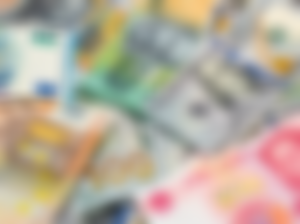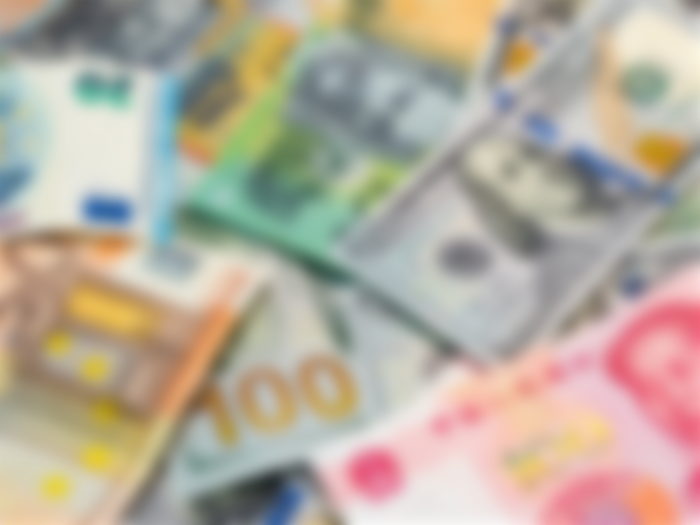We Entered a New Money Order in the World
After Russia's entry into Ukraine on February 24, 2022, we entered a new world system as a result of a series of events triggered by the financial sanctions imposed on Russia by the USA and Western countries. In this week's article, I will share with you some of the views of an analyst named Zoltan Pozsar, who has written two of the most talked about reports (Ref:1 and 2) in recent weeks regarding this new order. Then, by examining the unexpected consequences of the financial sanctions, I will explain how Russia can turn this situation into an advantage both for its own people and for the peoples of some countries in the region, including our indirectly affected country. Of course, what I will tell you will be a combination of the ideas of myself and my dear friends in my close circle, as always.
Pozsar, who previously worked at the NY Fed, later served as a consultant to the US Treasury and now works as a strategist at the bank called Credit Suisse, has published a research report titled "Bretton Woods III". (Ref:2) I reproduce the first sentences of this report here:
“We are witnessing the birth of a new world monetary order, Bretton Woods III, that will focus on commodity-based currencies in the East and will likely weaken the Eurodollar system and also contribute to inflationary forces in the West.
A crisis is developing. A commodity (commodities) crisis. Commodity is collateral and collateral is money. So this crisis is about the growing attraction of outside money to inside money. Bretton Woods II was built on domestic money and its foundations collapsed a week ago when the G7 nations seized Russia's foreign exchange reserves.

Throughout the article, Zoltan briefly says this: The G7 countries, namely the West, shot themselves in the foot with the financial sanctions they started to apply against Russia. After that, the most important move was made against the fact that the dollar continued to be the reserve currency in the world, and this was done by Western countries under the leadership of the USA. Because last week, Russia told the Europeans the goods they bought, their food (wheat), the fuel they would burn (oil and gas), the fuel they would burn (oil and gas), the money they bought with almost free money (this is what Zoltan calls the inside money in the above paragraph), based on our faith in the power of the American state. announced that it will now sell the energy and minerals it will use for only rubles. In the second report, Pozsar highlighted an important point by saying "You can print money, but you cannot print gas, oil and wheat".
Maybe the Europeans have not realized it yet, but if Putin does not step back from this move, Zoltan wrote his reports with the assumption that Russia will not make any concessions from now on, he says, in summary, we will enter a new financial system based on commodities from now on. In this new system, if Russia makes the necessary and right moves, the ruble will first become a regional reserve currency and then a global reserve currency.
Could the ruble be a reserve currency?
Until this past March, Russia was the world's 11th largest economy, and despite having a strong army and arms industry, it actually lived like a Saudi Arabian of 142 million people. With the income it earned from gas, oil and coal sales, it was able to offer its people a more luxurious life than it should have, like a rich Arab country. During the years of Putin, Russia built state-owned Rostek, Roskozmos, Rosneft, etc. It took on the appearance of a giant country of civil servants paying salaries to millions of people working under companies such as.
In other words, Russia with Putin is in a much better situation than Western states, both with its gold wealth that it has accumulated over the years, and with its rich hydrocarbon deposits and mines within the country's borders. It has a solid foundation, which does not survive with virtual money like European states.
While it was thought that the country, which has come to this day with these facts, has no solution against the intense financial sanctions it is paying for the Ukraine attack, it has started to be understood that this is not the case.
Now the ruble has two options:
1. To become a reserve currency based on the gold asset in the treasury of the Russian state and to support being a solid currency with the physical gold behind it.

2. To become a regional and eventually a global reserve currency by being indexed to the hydrocarbon fuels it produces and to commodities such as wheat and fertilizer.
He showed the sentence that the Central Bank of Russia recently declared that he was already considering the first of these: "I will give a gram of gold to the banks that bring 5000 rubles." This bank killed two birds with one stone by pegging a gram of gold, which is trading at 62 dollars in international markets, to 5000 rubles. It not only fixed the ruble/gold parity, but also set a lower limit for the possibility of the ruble falling. This lower limit became 5000/62 = 80.6 rubles. In the day immediately following this movement, the price of the ruble against the dollar decreased from 100 to around 82-83 rubles. The effect of this move in the medium and long term may also be interesting, because if the 1935 dollar ounce price (by Western speculators) on the London and New York gold exchanges (LBMA and COMEX) is to be brought down virtually, they will have to manipulate the ruble, which this time. They don't have any mechanism for that. On the other hand, if the ruble will appreciate in value after that, then its reflection on the gold price will reveal the fact that the speculators have established, namely the immoral relationship between physical gold and paper gold (if there is such a relationship).
The indexing of the ruble to gold is the subject of another article, because the issue of making a gold-indexed global reserve currency, whether this currency can be the ruble or not, is an important issue that needs to be thoroughly studied and discussed, and it is beyond me. I deliberately want to deal with the second issue, namely how to make a commodity-indexed regional currency and how the ruble can play a role in this field. What I will write on this subject can be read together with my articles on "asset-backed tokens", that is, commodity-indexed tokens, and if it is done like this, what I am saying here will be understood better.

